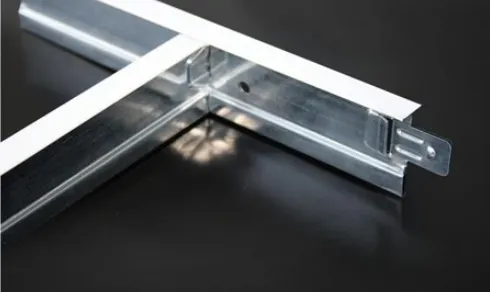- Afrikaans
- Albanian
- Amharic
- Arabic
- Armenian
- Azerbaijani
- Basque
- Belarusian
- Bengali
- Bosnian
- Bulgarian
- Catalan
- Cebuano
- Corsican
- Croatian
- Czech
- Danish
- Dutch
- English
- Esperanto
- Estonian
- French
- German
- Greek
- Hindi
- Indonesian
- irish
- Italian
- Japanese
- Korean
- Lao
- Malay
- Myanmar
- Norwegian
- Norwegian
- Polish
- Portuguese
- Romanian
- Russian
- Serbian
- Spanish
- Swedish
- Thai
- Turkish
- Ukrainian
- Uzbek
- Vietnamese
12月 . 02, 2024 03:07 Back to list
Accessing Your Attic Easy Solutions for Ceiling Access Panels and Maintenance
The Importance of Ceiling Attic Access Panels
Ceiling attic access panels are often overlooked elements in the architecture of a home. While they might not be the most glamorous feature, they serve a critical function that can enhance the functionality and safety of your living space. Understanding their importance, proper installation, and maintenance can help homeowners appreciate these panels and make informed decisions.
What Are Ceiling Attic Access Panels?
Ceiling attic access panels are openings in the ceiling that grant entry to the attic space above. They are commonly found in hallways, closets, or other out-of-sight areas of a home. These panels come in various sizes and materials, ranging from wood to drywall, and can be painted or finished to blend in with the surrounding ceiling. The primary purpose of these panels is to provide safe and convenient access to the attic for maintenance and inspection.
Why Are They Important?
1. Ease of Access for Maintenance Attics often harbor important components of a home’s infrastructure, such as insulation, HVAC systems, and roof structures. Regular inspection and maintenance of these elements are crucial for ensuring they function correctly and efficiently. Ceiling attic access panels enable homeowners or professionals to quickly reach these areas without major construction work or damage to the ceilings.
2. Improved Insulation and Energy Efficiency Properly insulated attics can significantly impact a home's energy efficiency. If access to the attic is restricted, homeowners may neglect to check or replace insulation when necessary. By installing a ceiling attic access panel, homeowners can easily assess insulation levels, identify leaks, and take steps to improve energy efficiency, ultimately saving money on energy bills.
3. Pest Control Attics can be a haven for pests like rodents, insects, and other unwanted critters. Regular inspections via access panels can help detect infestations early, preventing more significant damage and health hazards. Quick access allows for timely interventions, such as pest control measures and repairs.
4. Safety and Code Compliance In many regions, building codes require attics to have adequate access points for safety reasons. Ceiling attic access panels can ensure compliance with these regulations, providing a safe way for emergency responders or maintenance personnel to enter the attic in case of emergencies.
Selecting the Right Access Panel
ceiling attic access panel

When considering the installation of a ceiling attic access panel, homeowners should keep several factors in mind
- Size The size of the panel should correspond to the intended use. If frequent access is needed, a larger panel may be beneficial. Conversely, for sporadic checks, a smaller panel may suffice.
- Material Different materials offer varying levels of durability and insulation. For instance, insulated access panels can help maintain attic temperature, contributing to overall energy efficiency.
- Location Choosing the right location for the panel is crucial. Ideally, it should be situated in a place where it won’t obstruct living space but is still easily accessible.
Installation and Maintenance
While it’s possible for homeowners to install access panels themselves, professional installation ensures that the panels are secure and properly insulated. A poorly installed panel can lead to energy loss or even safety hazards.
Once installed, regular maintenance is essential. This includes checking for any signs of wear, ensuring the panel opens and closes smoothly, and verifying that insulation remains intact around the access point.
Conclusion
Ceiling attic access panels may seem like simple features, but their role in home maintenance, energy efficiency, and safety is vital. By understanding their importance and properly maintaining them, homeowners can ensure that their attics remain accessible, functional, and safe. In an age where energy efficiency and home safety are paramount, investing in a quality ceiling attic access panel is a smart choice for any homeowner.
-
Transform Interiors with PVC Gypsum Ceiling: A Stylish, Durable, and Moisture-Resistant SolutionNewsMay.19,2025
-
The Smart Interior Upgrade: Discover the Durability and Versatility of Gypsum Ceiling Access Panel SolutionsNewsMay.19,2025
-
The Smart Choice for Interior Design: Discover the Value of PVC Gypsum Ceiling SolutionsNewsMay.19,2025
-
Mineral Fiber Ceiling Tiles: The Smart Blend of Performance and AestheticsNewsMay.19,2025
-
Mineral Fiber Ceiling Tiles: The Superior Choice Over Gypsum for Sound and Fire SafetyNewsMay.19,2025
-
Mineral Fiber Ceiling Tiles: Eco-Friendly Strength and Style for Every CeilingNewsMay.19,2025







